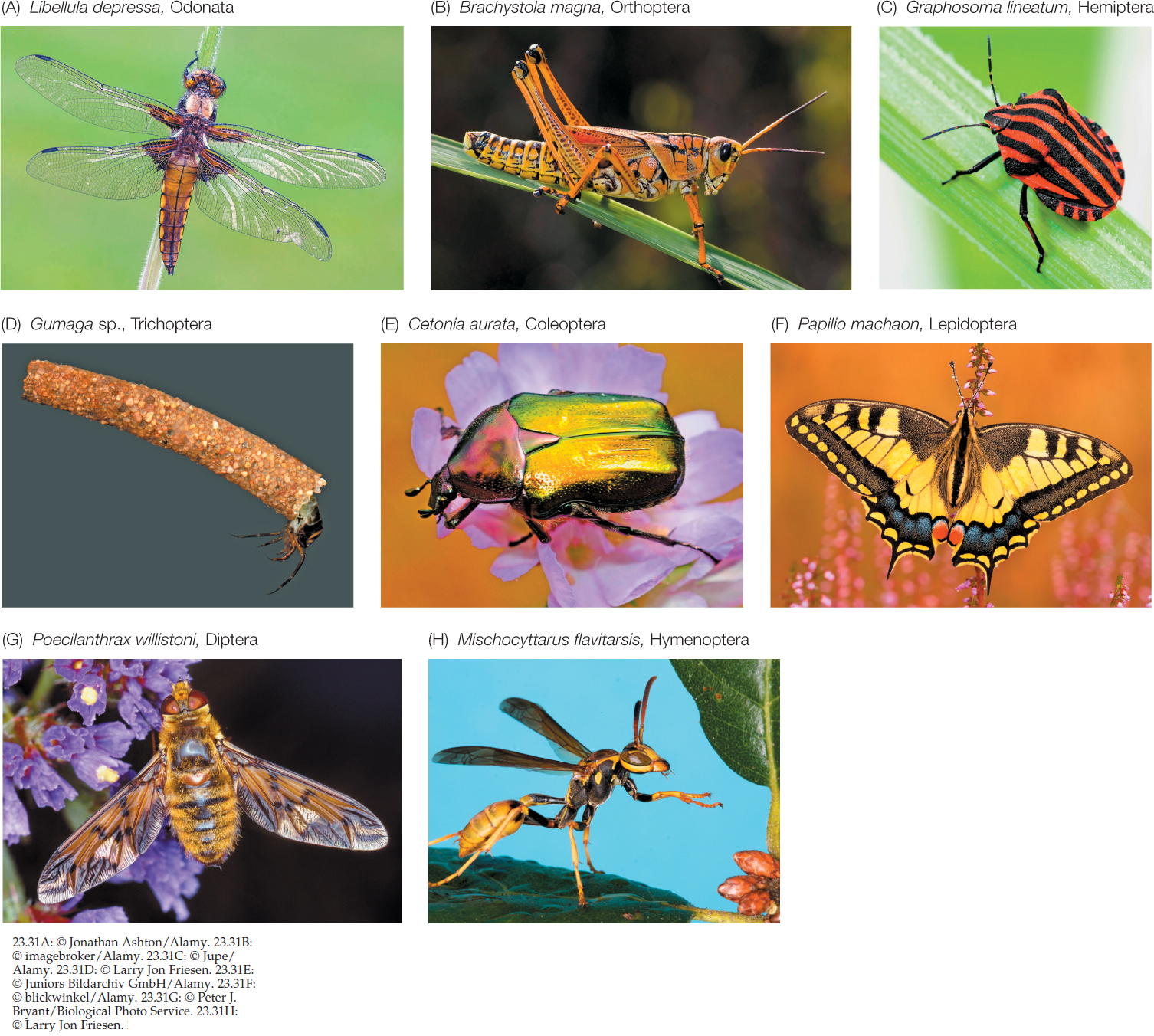
Figure 23.31: Diverse Winged Insects (A) Unlike most flying insects, a dragonfly cannot fold its wings over its back. (B) Orthopteran insects such as grasshoppers undergo several larval molts (instars), but the juveniles resemble small adults (incomplete metamorphosis). (C) Hemipterans are “true” bugs. (D–H) Holometabolous insects undergo complete metamorphosis. (D) A larval caddisfly (right) emerges from its case constructed from silk and sand. (E) Coleoptera is the largest insect group; beetles such as this rose chafer account for more than half of all holometabolous species. (F) The swallowtail butterfly is found in most parts of North America. (G) This bee fly is a true fly. Although bee flies cannot sting, most potential predators avoid them because of their resemblance to bees. (H) This western paper wasp is a hymenopteran, a group in which most members display social behaviors.